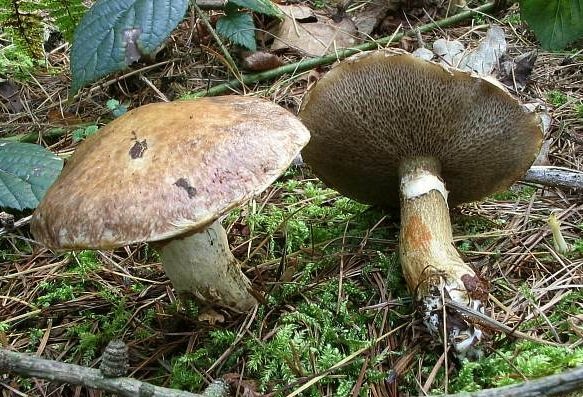Gray butter dish (A slimy pig)
- Division: Basidiomycota (Basidiomycetes)
- Subdivision: Agaricomycotina (Agaricomycetes)
- Class: Agaricomycetes (Agaricomycetes)
- Subclass: Agaricomycetidae (Agaricomycetes)
- Order: Boletales (Boletales)
- Family: Suillaceae
- Genus: Suillus (Oiler)
- Type: Suillus viscidus (grey butterdish)

Butter dish gray (lat. Pig viscidus) is a tubular fungus of the genus Oiler of the order Boletovye (lat. Boletales).
Collection places:
Gray butterdish (Suillus viscidus) grows in young pine and larch forests, often in large groups.
Description:
Cap up to 10 cm in diameter, cushion-shaped, often with a tubercle, light gray with a greenish or purple tint, slimy.
The tubular layer is grayish-white, grayish-brown. Tubules wide, descending to the stem. The pulp is white, watery, yellowish at the base of the stem, then brownish, without any special smell and taste. It often turns blue when broken.
Leg up to 8 cm high, dense, with a wide white felt ring, which quickly disappears as the fungus grows.
Usage:
Edible mushroom, third category. Collected in July-September. Used fresh and pickled.
Similar species:
Larch butterdish (Suillus grevillei) has a bright yellow to orange cap and a golden yellow hymenophore with fine pores.
A rarer species, the reddish oiler (Suillus tridentinus) also grows under larches, but only on calcareous soils, it is distinguished by a yellowish-orange scaly cap and an orange hymenophore.









